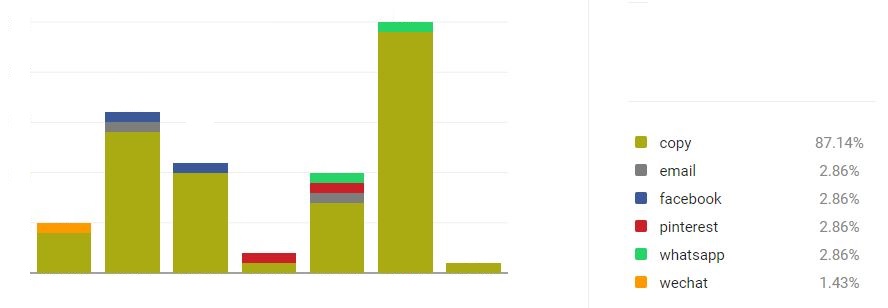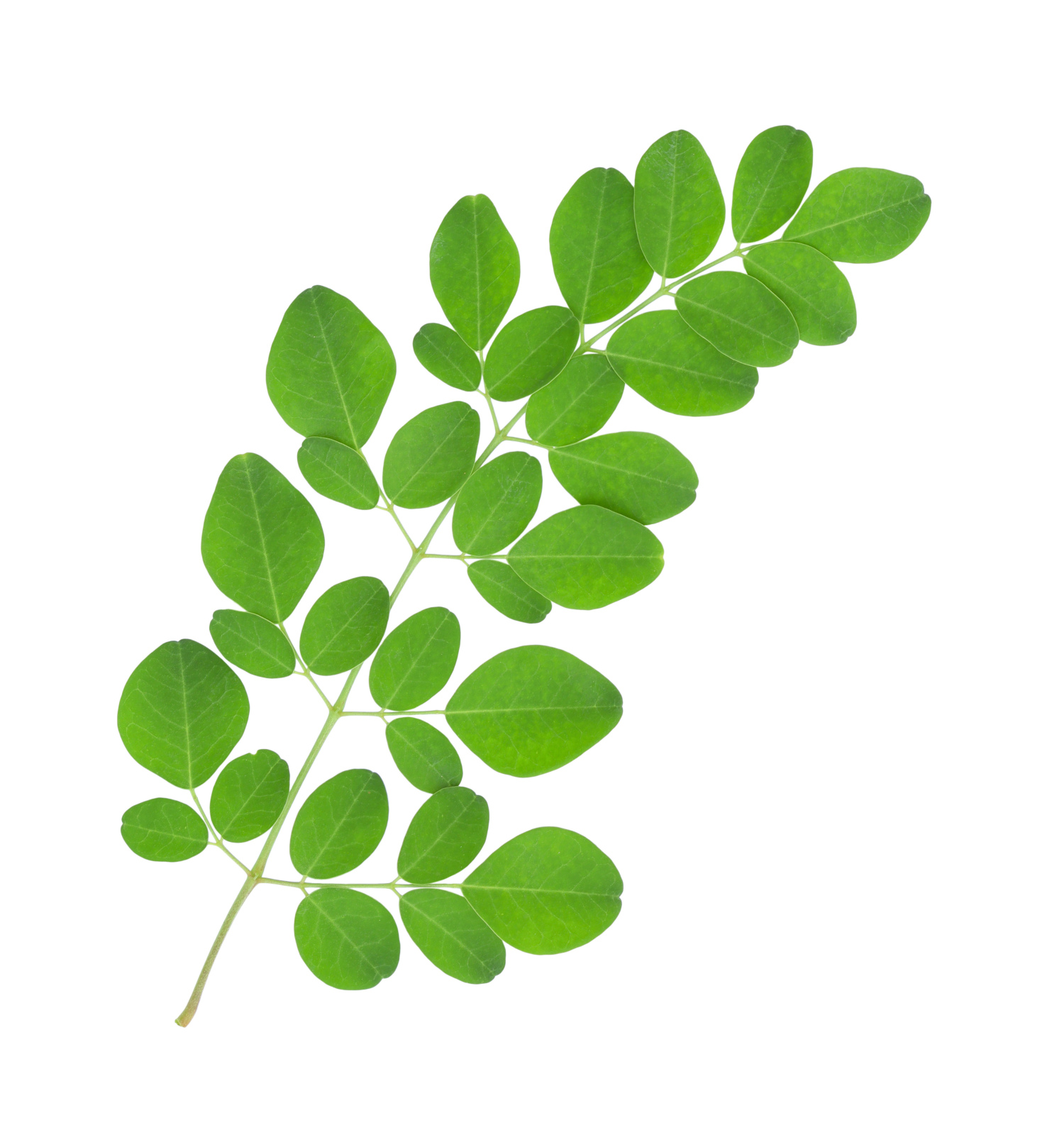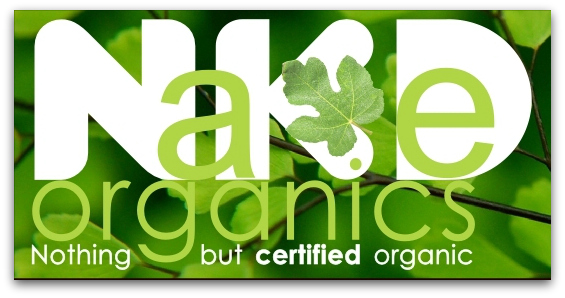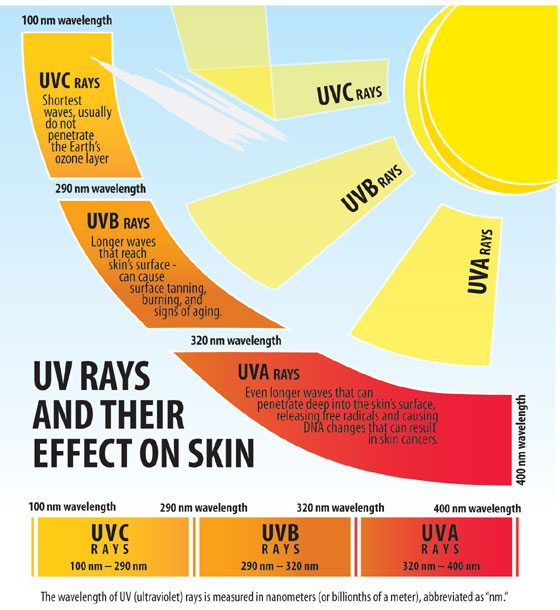|
|
www.moyoway.com |
Buy your Certified Organic |
|
|
CLICK FOR NAKED www.moyoway.com |
Moyo is an African origin word which implies that the
"heart and mind act as one to cultivate the spirit”
What is SPF
>Home Page >>Natural Advantage Ingredients >>>Natural Advantage Recipes >>>>Sunscreen Recipes >>>>>SPF
Sun Protection Factor is a laboratory measurement for protection against UVB rays (not UVA).
In laboratory conditions of constant UVB exposure to a test subjects skin, if 1 hour of exposure leads to sunburn, then Sun Protection Factor 15 allows for 15 hours of exposure before sunburn.
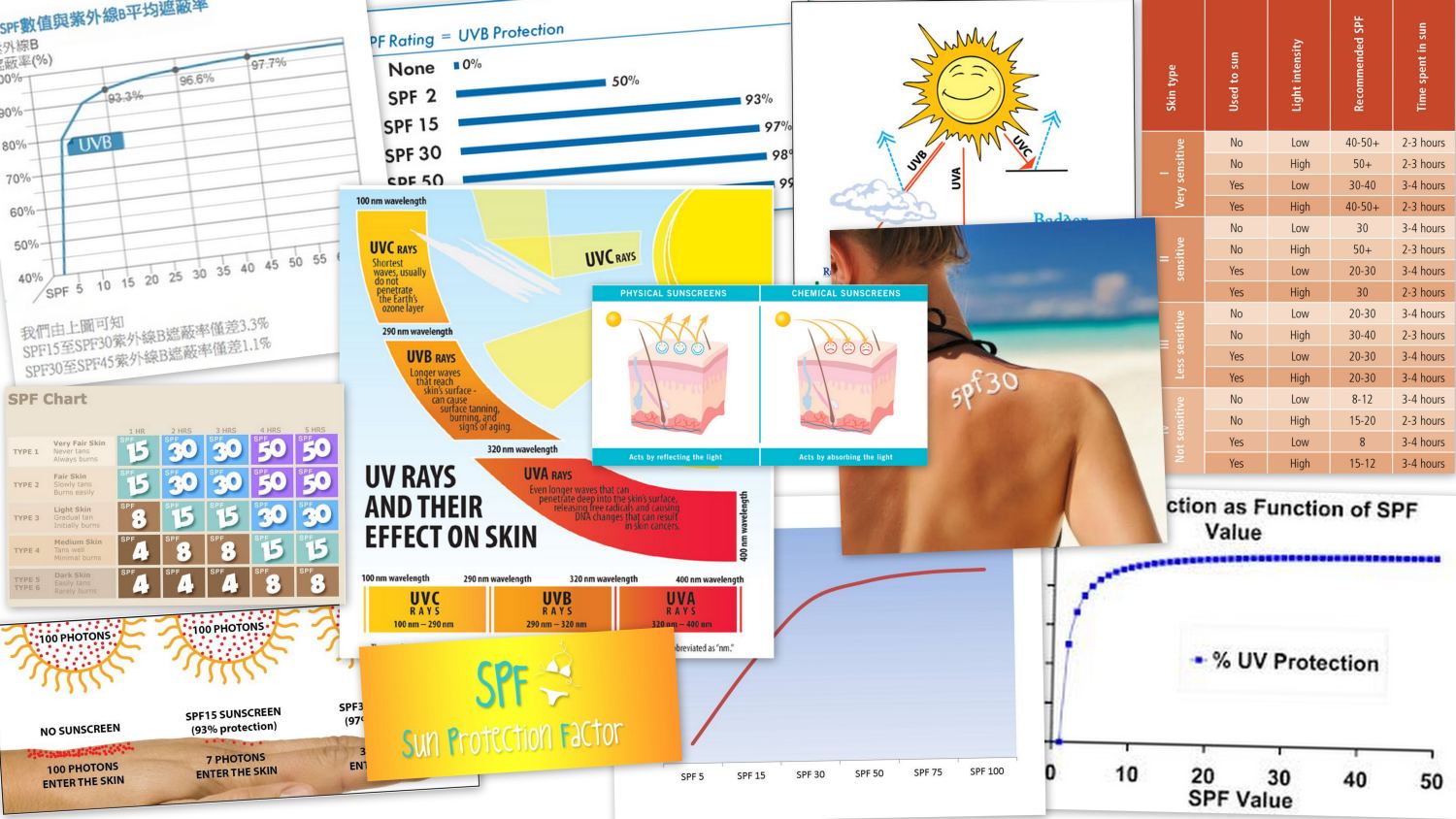
In the laboratory, the Sun Protection Factor formula looks like this :

The best illustration that we could find that demonstrates the effect of Sun Protection Factor on your skin shows the suns energy (described and measured in photons) penetrating your skin. These photons are carried on wavelengths of different size and are described as UV-A, UV-B, UV-C, etc.
Click to enlarge
Image below - the process of blocking these photons from entering the skin is either by chemical or physical processes and the measurement of blocked photons is described as Sun Protection Factor (An industry standard so that we are all on the same wavelength)
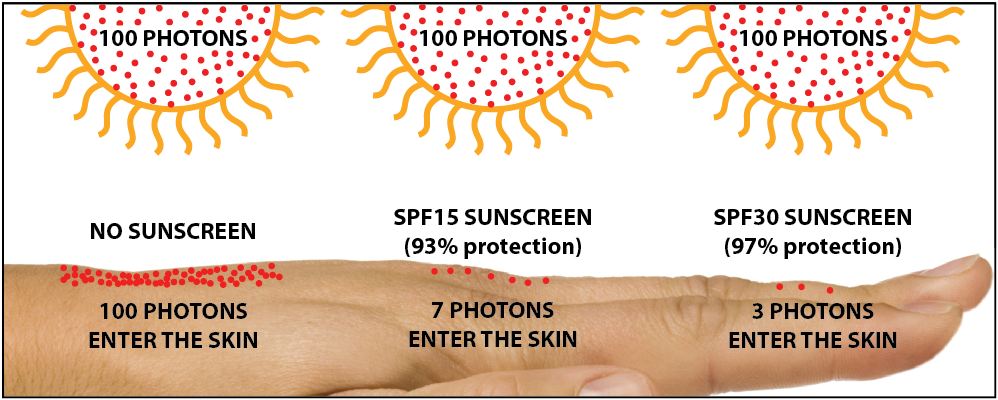
Image credit : Unknown
In real life, Sun Protection Factor is a little different to a mathematical formula and we need to add some variables, like these :
- sunscreen is washed off
- sunscreen is covered by dirt
- intensity of the sun changes
- sunscreen is absorbed by the skin
- different skins react differently to UVB exposure (ie dark skin and light skin)
- sunscreens breakdown from sun exposure (especially chemical sunscreens)
UVA rays are the ones that go deep into the skin and cause DNA damage to the cells thereby increasing the risk of malignant melanomas. UVA wavelength = 320 to 400 nm.
UVB rays are the ones that cause reddening and sunburn. UVB wavelength = 290 to 320 nm.
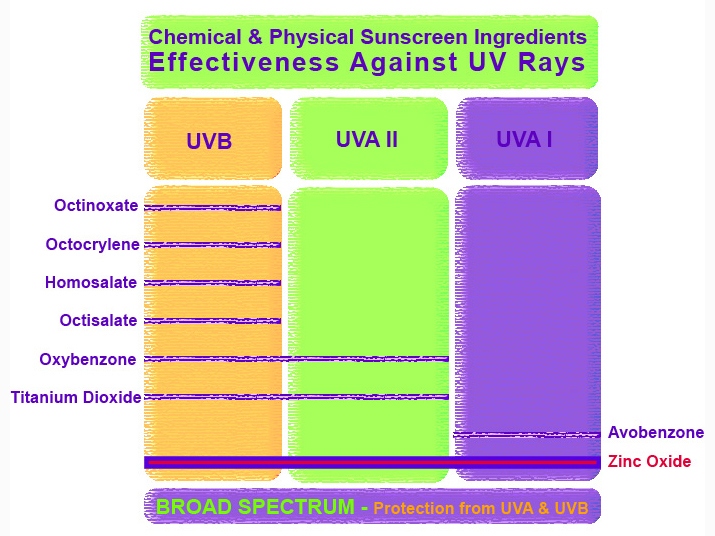
Image credit : www.rawelementsusa.com
(EWG's Top Rated Sunscreen)
Zinc oxide and titanium dioxide in natural sunscreen recipes offer the best protection for UVA and UVB because they are able to reflect wavelengths in both ranges.
If you are unsure about which Sun Protection Factor sunscreen to use, look at the illustration below to guide you.
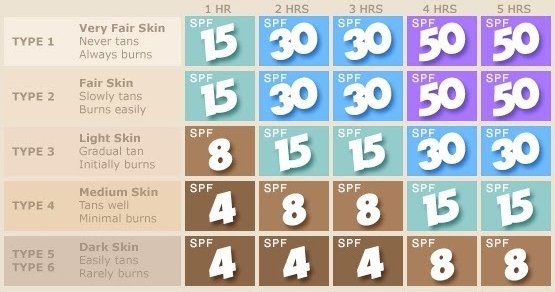
Image credit : Unknown
Natural sun protection ingredients with their corresponding SPF values
|
|
- Zinc oxide Sun Protection Factor 20 at 20% concentration - Inorganic natural mineral in powder form that reflects sun. By adding zinc oxide to essential oils, you will get a wider ranging sunscreen protector with good durability. SPF 2 to 45.
- Titanium dioxide Sun Protection Factor 20 at 25% concentration - Inorganic natural mineral in powder form that reflects sun. By combining with zinc oxide and essential oils, you will get the widest ranging sunscreen protector with good durability for a natural sunscreen. SPF 2 to 45.
Where there is an Sun Protection Factor of 2 to 45, for example, the reason for this is the concentration on your skin and/or the product itself.
If you had to dunk your entire body into a container of pure zinc oxide, you would probably achieve a Sun Protection Factor of around 45. If a cosmetic contains zinc oxide, the Sun Protection Factor would start at about 2 and level off at about SPF 30 - taking into consideration the concentration of zinc oxide that is mixed with other ingredients in the same cosmetic.
For the oils, raspberry for example, the Sun Protection Factor reduces the more refined it is. Maximum Sun Protection Factor can only be achieved from the first cold press. Once you start to filter the particles, decolourise and deodorize the oil, its Sun Protection Factor ability reduces.
These SPF's are only for indication and would vary considerably due to ingredient quality and manufacturing techniques.
What's Your Story?
Help to keep it real and tell your story.
Comments about your experiences and opinions will go a long way to helping all of us.
